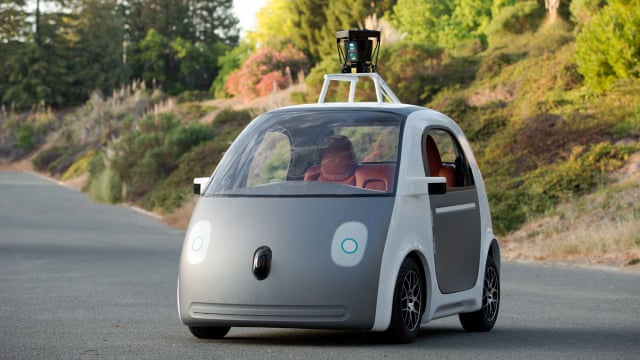Google needs no introduction. Today, it is one of the most valuable, profitable, and futuristic companies in the world. Innovation is in the flesh and bones here, employees treated as owners, and failures embraced with truest of hearts. Out of innovation and love for big ideas, born is a company that is so technically efficient that there’s no limit here to what can be achieved. Making an impact in the sky, at the ground or under the sea, is Google’s off-spin X – The Moonshot Factory, previously known as a Google X Projects.
About X Company
Google X was started as a dream project of its founders Larry Page and Sergey Brin, in January 2010. With the innovation at the helm of affairs at Google, the cofounders believed in investing some of the company’s resources in solving hard, long term problems. Hence, Google X was born to pursue “moonshots” – radical new technologies to address some of the world’s hardest problems.
In 2015, with the formation of Alphabet Inc. as a part of the restructuring process of Google, Alphabet Inc. resumed the position of the parent company of Google and various other Google subsidiaries. Still an innovative lab, but now a separate division within Alphabet, Google X becomes X company.
The renamed, X Company, with the older approach, works towards improving the lives of billions of people through radical technologies and innovations. Be it the ambitious self-driving cars (Waymo), using the giant internet balloons to deliver internet in rural and unconnected places ( Loom), drones to deliver the goods around the world (Wings) or using kites to generate electricity in unexpected places (Makani), X company’s “Moonshots” are worth drooling over.
Sneak Peek into X’s Moonshots
Waymo

Waymo began as a Google Self-Driving car experiment in 2009. The Self-Driving Car team, which was also X’s first moonshot project, graduated to become its Alphabet subsidiary in 2016. Intending to make it safe and secure for people and things to go where they’re going, Waymo is thriving to improve the world’s access to mobility while saving thousands of lives now lost to road accidents.
Waymo is using revolutionary technologies such as three-dimensional maps, sensors, and software scanners to teach vehicles about driving and building what they’re calling as the ‘most experienced driver.’ Waymo aims to create a car without steering, pedals, and drivers.
Loon
One of the most radical projects of X, it aims to expand internet connectivity by launching giant internet balloons in the stratosphere, which could last at least 100 days in the sky. Instead of trying to expand the connectivity through the ground, Loon takes aerial route by establishing a network of balloons up above the sky to connect the rural and unconnected areas to the internet, fill significant coverage gaps and provide uninterrupted internet services to every nook and corner of the world.
Loon makes use of material science, atmospheric modeling, machine learning, communication systems, and more to deliver the internet using the most sophisticated system.
Wing
The wing is another reforming moonshot from X, which is a drone delivery system aiming to improve access to goods while reducing the traffic-related congestion in the city and help ease the carbon emissions related to moving of goods from one place to another.
The Delivery drones having a light energy-efficient design, which enables them to fly up to 120 km/h, and are driven entirely by an all-electric power system with zero carbon emissions.
In July 2018, the team graduated from X to become “Wing,” an entirely independent Alphabet business.
Makani
Just like others, Makani is a pioneering moonshot of X, which makes use of Makani energy kite – an aerodynamic wing tethered to a ground station. As the kite flies in loops, rotors on the wing spin as the wind moves through them, generating power that is sent down to a leash to the grid.
Makani started in 2006 when a group of devoted kitesurfers had the novel idea that kites might bean able source of wind energy to power the world. The earliest kites were made of fabric and closely resembled kiteboarding gear. Testing these prototypes proved that the kites needed more efficiency and control than structure could afford. This led to the idea of rigid kites that could support onboard rotors to harness the apparent wind for higher lift and more energy production.
Verily
Verily, previously known as Google Life Sciences, was started in 2012 as a group of projects that had the potential to transform the detection, prevention, and management of diseases through technological advances such as Machine Learning, Predictive Analysis, and advancement in wearable devices.
Verily is heavily investing in technology and data science to work around the diseases and other global health problems that stand in the way of people enjoying healthier, happier lives.
Coming from Verily are the breakthroughs like Smart Contact Lens, Liftware, and Google Glass.
Also Read: The Superiority Of Amazon Logistics And Supply Chain
Other projects which have not yet graduated
Apart from this scientific and technological magnificence that have graduated from X to become separate subsidiaries of Alphabet, various projects are in development phase such as underwater sensing and perception project which aims to protect the ocean while preserving its ability to support human life and feed families (Tidal), prototyping a robotic system that can operate autonomously in unstructured social environments (The Everyday Robot Project), and other investigations.
Culture is the ‘X’ Factor at X.
At X, the employees, or the Xers as fondly called, are trying to achieve much more than developing the dazzling technologies and scientific processes. They’re trying to systematize the process of innovation.
Failure is not considered as something to be ashamed of at X. Rather, they embrace faults as a powerful tool of learning and then making progress. They call it as being ‘responsibly irresponsible.’ Failures are being adopted as much as success. Also, a bonus is provided to the team to kill its project when they encounter a fatal flaw, of course not as significant to encourage people to execute projects without appropriate investigation but to acknowledge their years of hard work.
The culture is developed in such a beautiful way that X is not considered as a single unit by the Xers but an amalgamation of industries like mobility, logistics, connectivity, health, food supply, clean energy and technologies like AI and Machine Learning, Robotics, Hardware Engineering, Software Engineering, and Business Strategic technologies.
X, with all its glitters and glories, is a shining example of what we have in store for the future and how technologies can impact the world in so many good and better ways. Let’s see what all surprises X have for this world to see.


